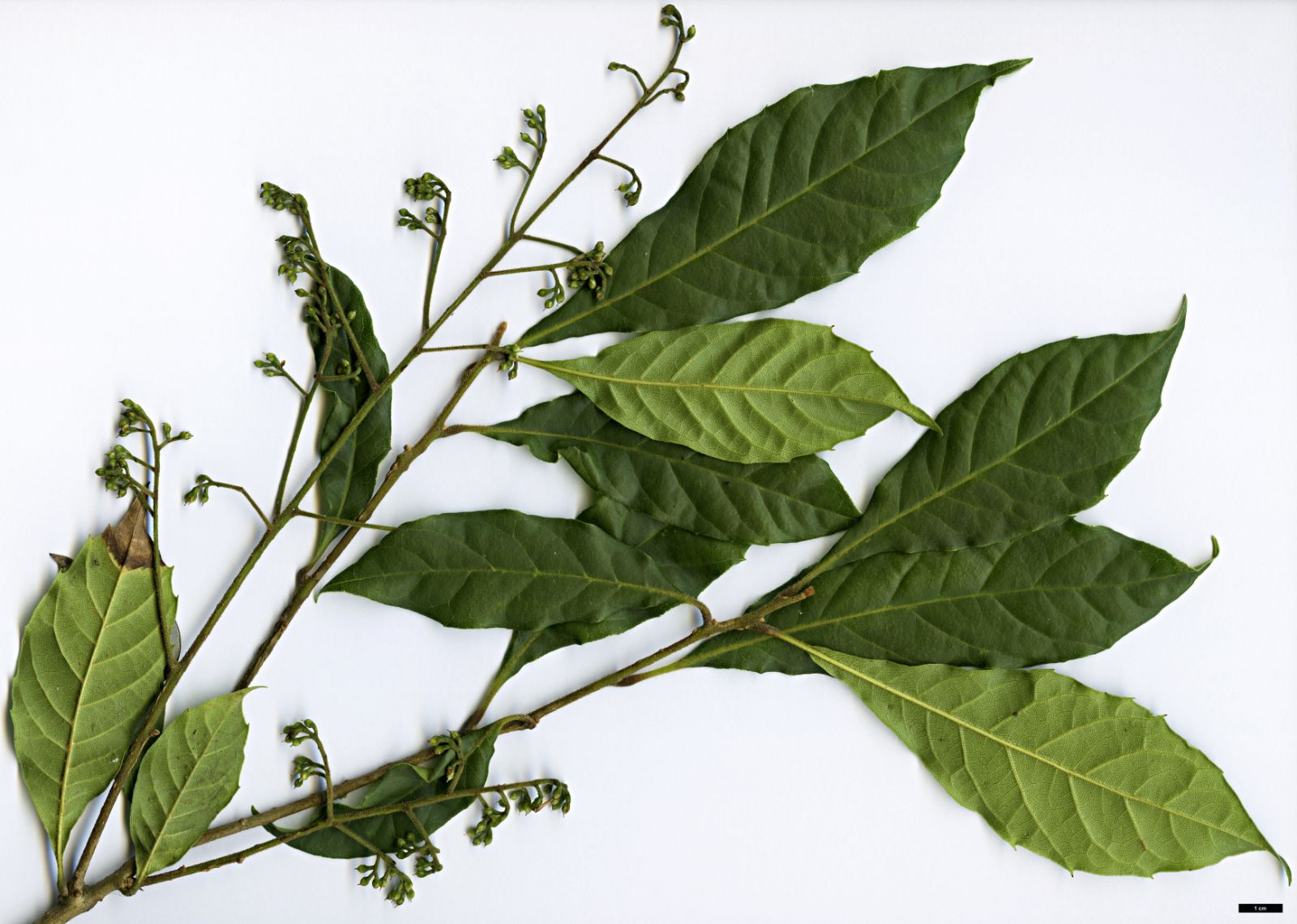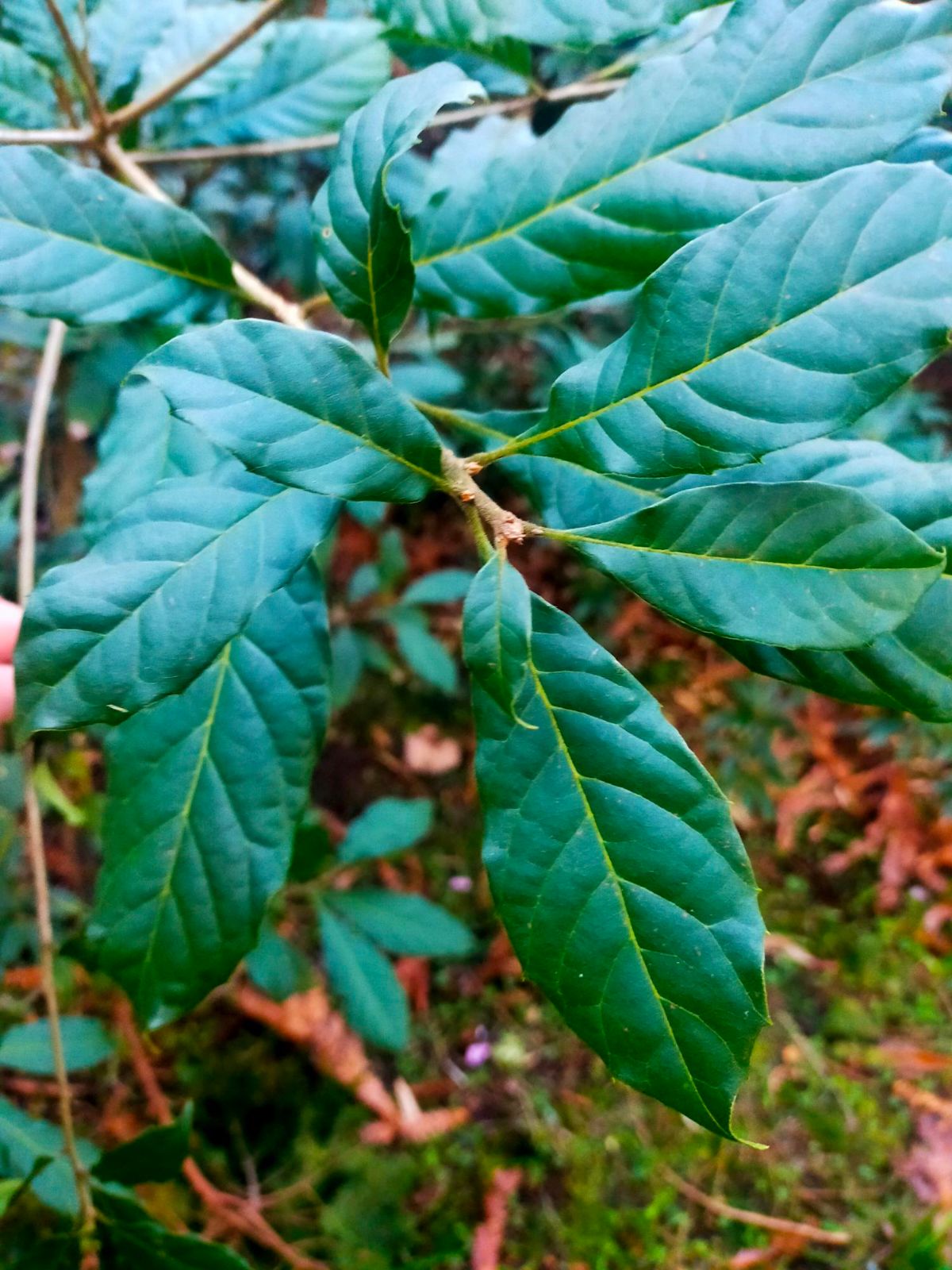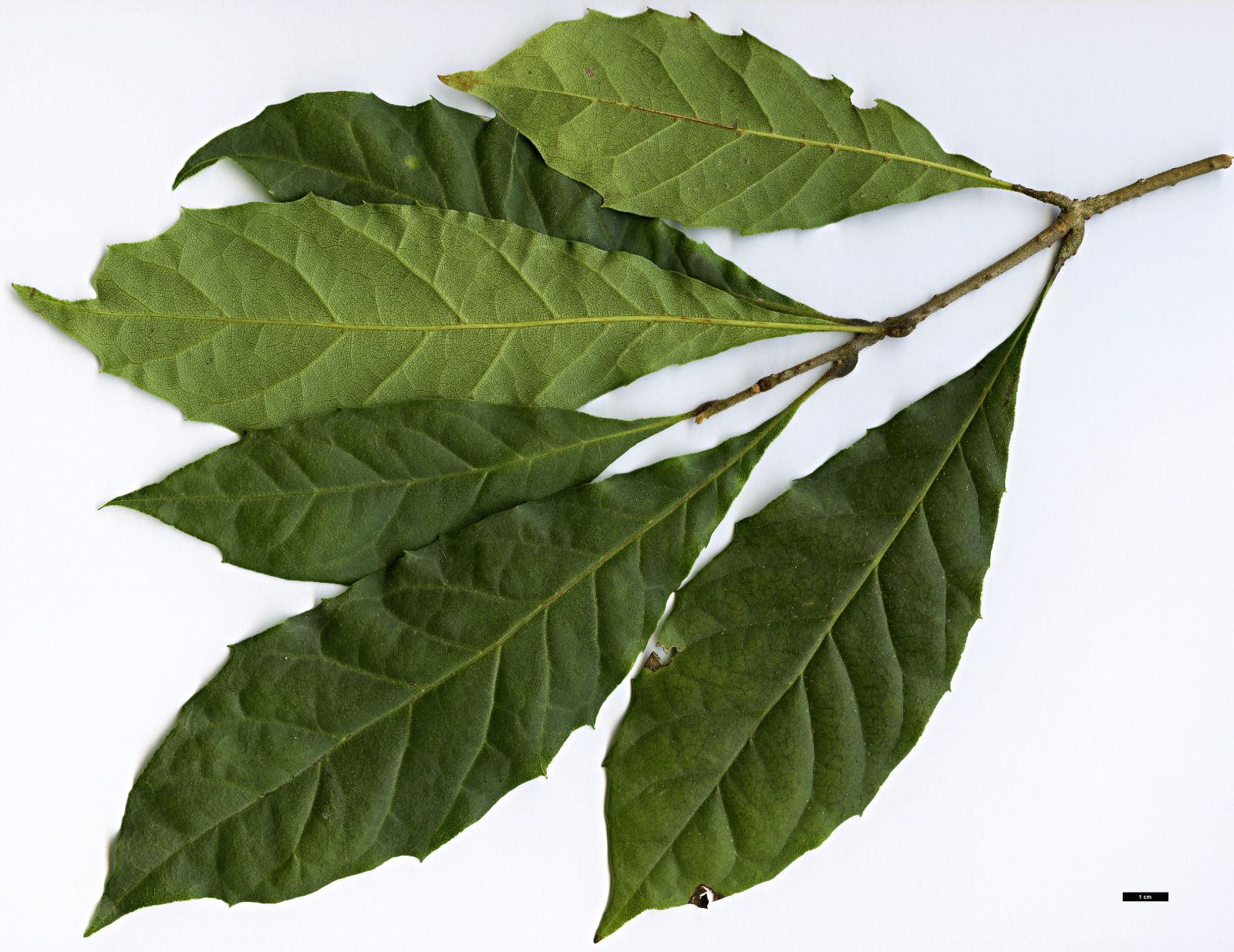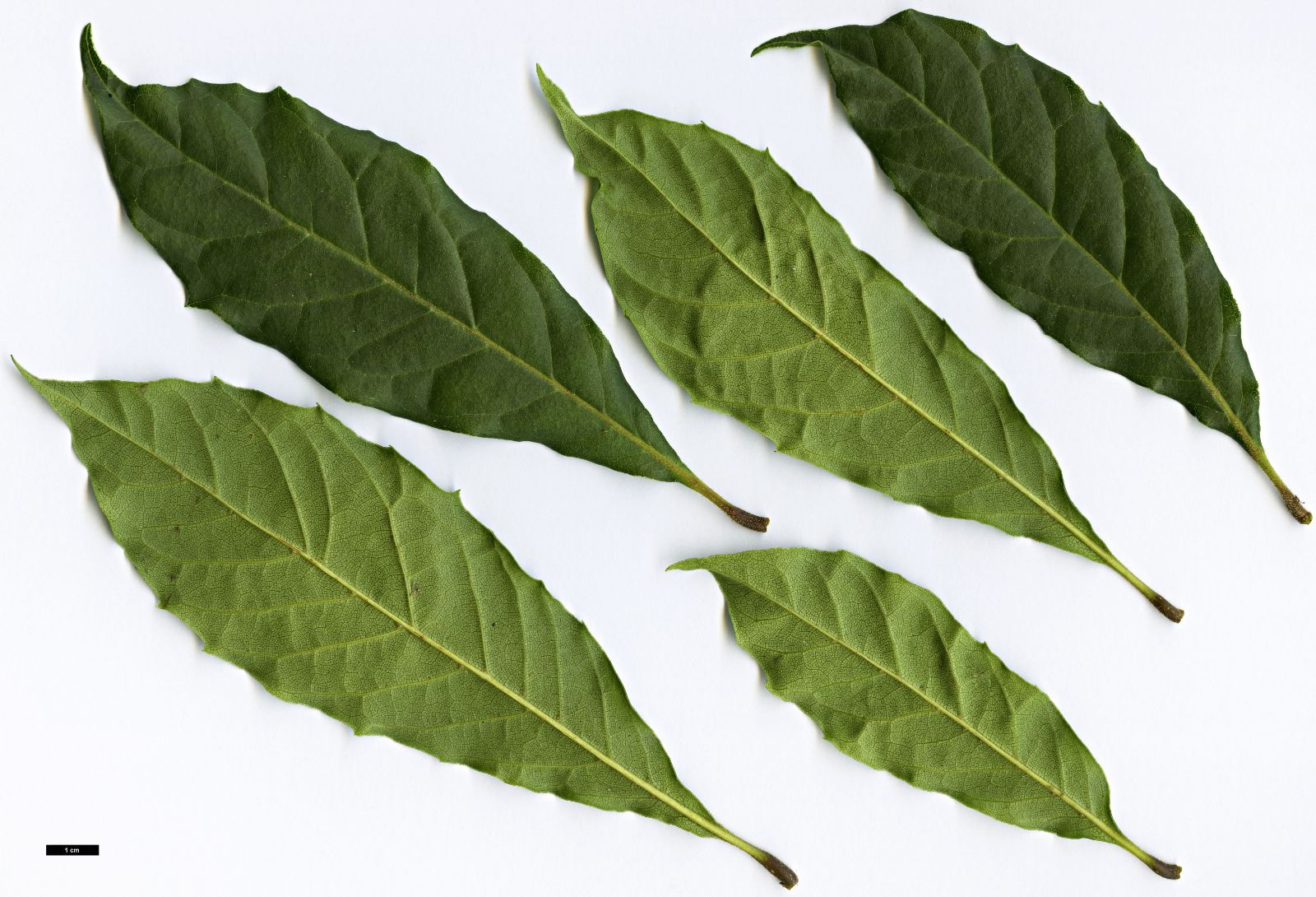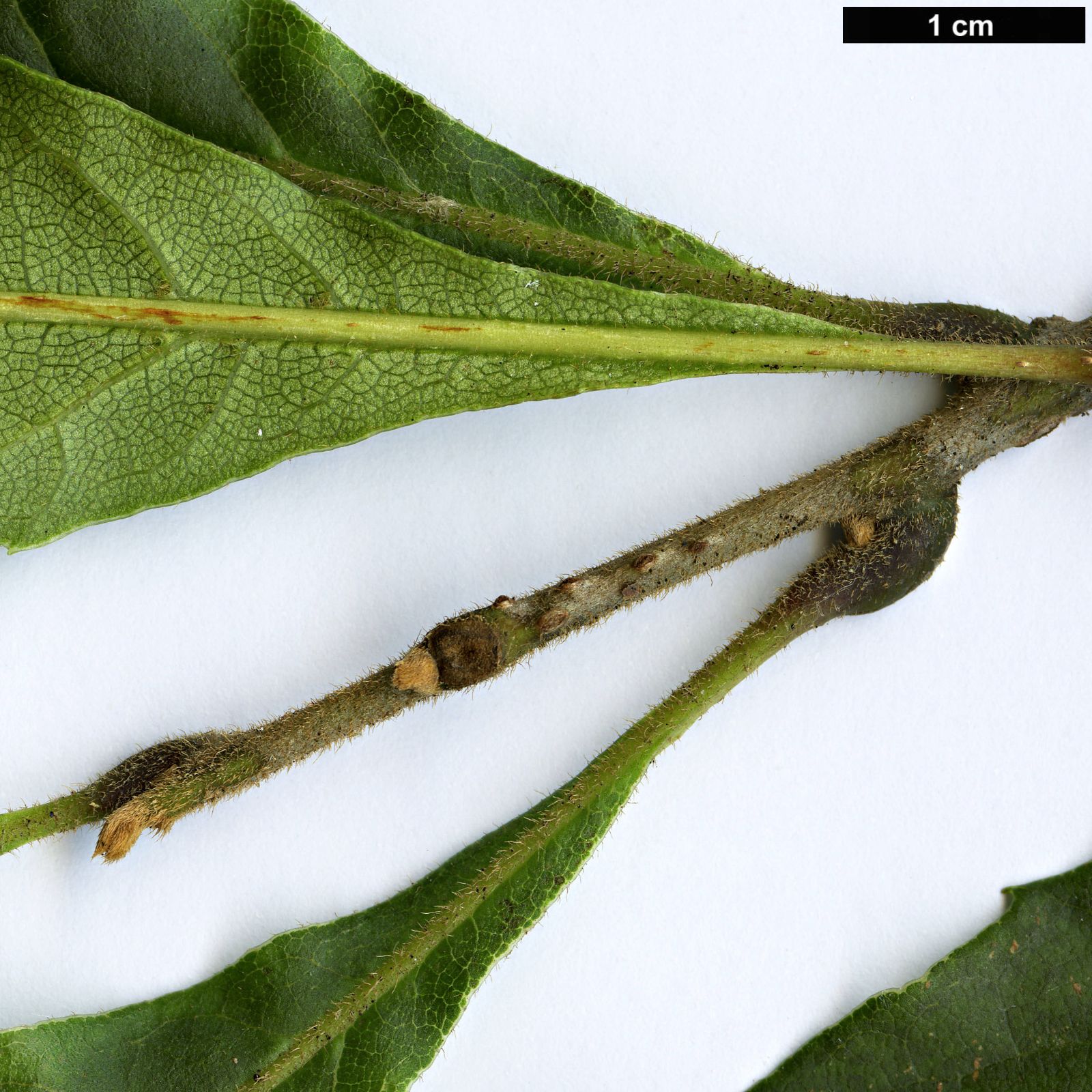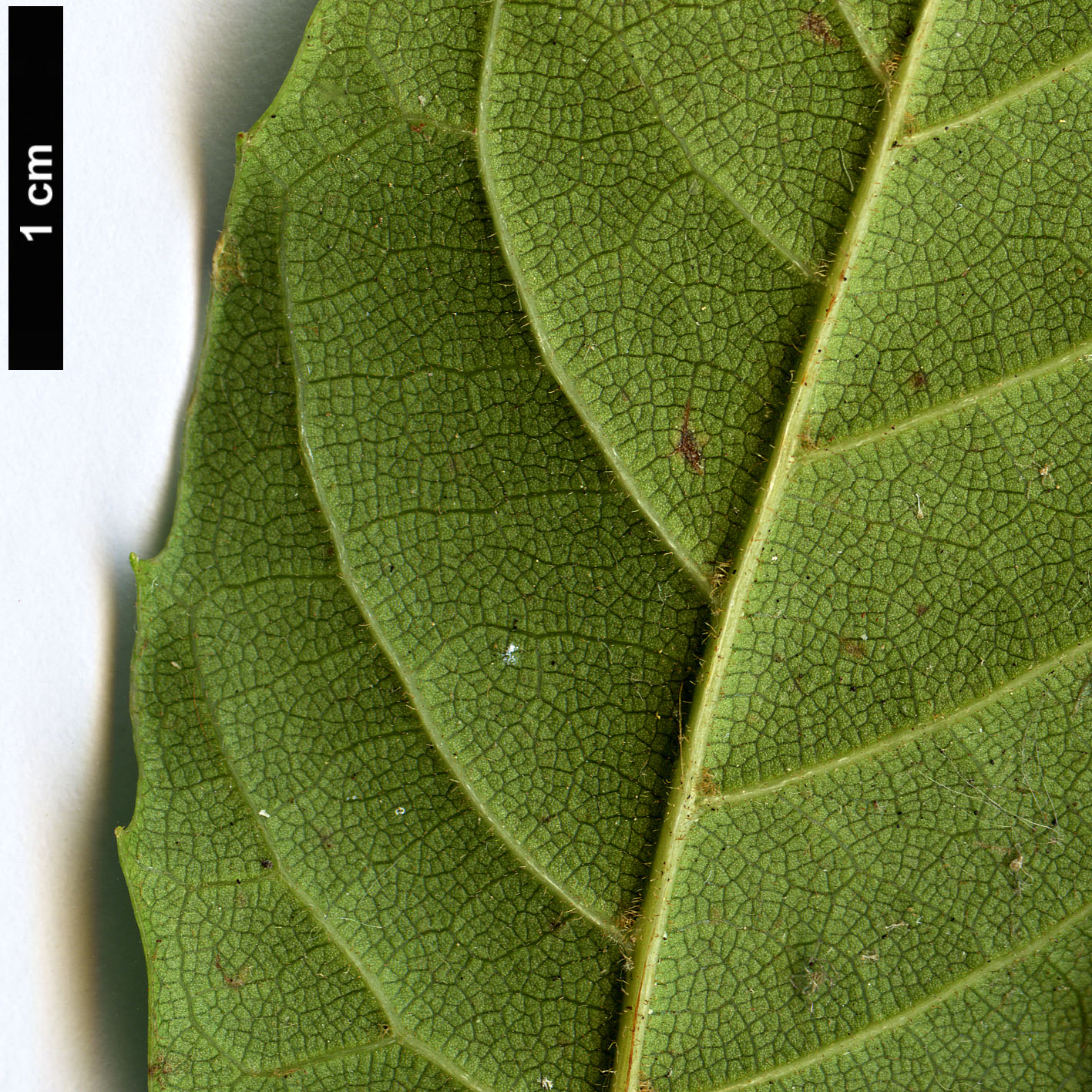Meliosma dentata
Sponsor
Kindly sponsored by
Lady Diana Rowland
Credits
Owen Johnson (2022)
Recommended citation
Johnson, O. (2022), 'Meliosma dentata' from the website Trees and Shrubs Online (treesandshrubsonline.
Genus
Synonyms
- Lorenzanea dentata Liebm.
- Lorenzanea dentata var. minor Liebm.
- Meliosma matudae Lundell
- Meliosma oaxacana Standl.
Evergreen tree to 20 m. Shoots with many raised lenticels; buds with rusty pubescence. Leaves alternate to subopposite, 7–18 × 2–6 cm, elliptic to obovate, shortly pointed, usually becoming glabrous; veins in (6–)8–13(–15) pairs, not reaching the margin which is usually revolute at the base, entire or dentate; petiole 7–17 mm, pubescent, the hairs at the base at least not appressed. Flower-heads axillary, erect and compact, branching 2 or 3 (rarely 4) times, 6–15(–28) cm long, with variably dense rusty to yellowish hairs. Sepals 5. Petals 5, white, to 2.3 mm long, minutely ciliate. Fruit 8–14 mm long, subglobose to slightly pear-shaped, ripening greenish-white to red. Flowers and fruit produced year-round. (Morales 2013).
Distribution Costa Rica El Salvador Guatemala Honduras Mexico Nicaragua
Habitat Evergreen cloud forests, 1300–3200 m asl.
USDA Hardiness Zone 9
RHS Hardiness Rating H3
Conservation status Not evaluated (NE)
Meliosma dentata gains a mention here on the basis of two young trees at Tregrehan, UK, which have been confirmed by Frits van Beusekom (J. de Langhe pers. comm.); this is probably the first New World taxon to be cultivated in Europe, and in this form at least it appears hardier than its subtropical origins might lead us to expect. The narrow evergreen leaves, without regular serrations or conspicuously parallel veins, resemble those of many other central American and south-east Asian species, and the compact, rather privet-like flower-heads, which can appear little by little throughout the year, are not so showy as the spring or early summer blossom of the hardiest Meliosma. In the wild this is a widespread and rather variable species (Morales 2013).
The Tregrehan trees were planted in 2014 and 2016 and are 3–4 m tall in 2022 (T. Hudson pers. comm.) They first produced their tiny, scented flowers in 2021 and ripened a few quite large (7–8 mm wide), showy, pure white fruit.

